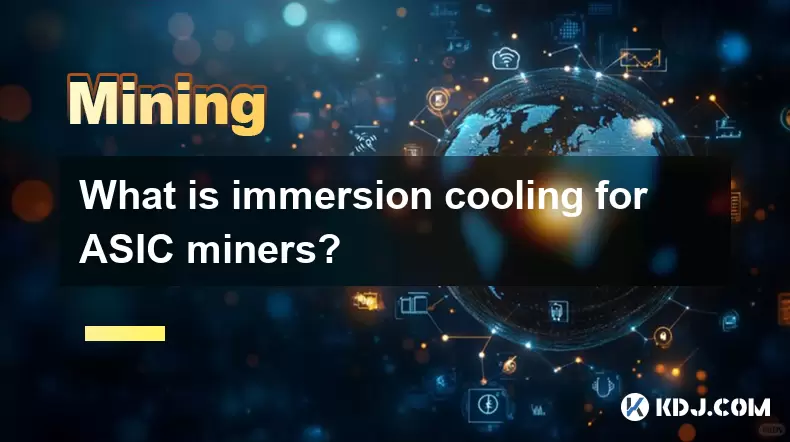-
 Bitcoin
Bitcoin $117,953.1650
-0.44% -
 Ethereum
Ethereum $3,404.6769
7.20% -
 XRP
XRP $3.2145
7.63% -
 Tether USDt
Tether USDt $1.0001
0.01% -
 BNB
BNB $717.7875
3.79% -
 Solana
Solana $175.1351
5.00% -
 USDC
USDC $0.9997
-0.02% -
 Dogecoin
Dogecoin $0.2140
6.36% -
 TRON
TRON $0.3125
3.78% -
 Cardano
Cardano $0.7984
6.61% -
 Hyperliquid
Hyperliquid $46.3875
-2.89% -
 Stellar
Stellar $0.4661
-1.97% -
 Sui
Sui $3.9769
-0.95% -
 Chainlink
Chainlink $17.0299
3.26% -
 Hedera
Hedera $0.2442
2.02% -
 Bitcoin Cash
Bitcoin Cash $494.1589
-0.49% -
 Avalanche
Avalanche $22.7305
3.32% -
 Shiba Inu
Shiba Inu $0.0...01429
3.24% -
 UNUS SED LEO
UNUS SED LEO $8.8207
-0.20% -
 Toncoin
Toncoin $3.2223
3.73% -
 Litecoin
Litecoin $99.4978
2.54% -
 Polkadot
Polkadot $4.1940
2.13% -
 Monero
Monero $341.6175
2.76% -
 Pepe
Pepe $0.0...01357
4.19% -
 Uniswap
Uniswap $8.8637
-2.74% -
 Bitget Token
Bitget Token $4.7017
0.48% -
 Dai
Dai $0.9998
-0.03% -
 Ethena USDe
Ethena USDe $1.0003
-0.04% -
 Aave
Aave $320.8518
-2.86% -
 Bittensor
Bittensor $428.9747
-1.94%
What is immersion cooling for ASIC miners?
Immersion cooling boosts ASIC miner efficiency by submerging hardware in dielectric fluid, enhancing thermal performance and reducing energy costs.
Jul 12, 2025 at 04:50 pm

Understanding Immersion Cooling for ASIC Miners
Immersion cooling is a high-efficiency thermal management solution designed specifically for high-performance computing hardware, including ASIC miners used in cryptocurrency mining. Unlike traditional air or even liquid cooling methods that rely on heat sinks and fans, immersion cooling involves submerging the entire electronic device or specific components directly into a thermally conductive but electrically insulating dielectric fluid.
This method allows for direct heat transfer from the ASIC chips to the surrounding coolant, eliminating many inefficiencies found in conventional cooling systems. The result is a significantly reduced operating temperature, which can enhance performance and prolong the lifespan of mining equipment.
Immersion cooling is particularly effective for ASIC miners due to their high power density and continuous operation under heavy workloads.
How Immersion Cooling Works for ASIC Miners
The immersion cooling process begins by placing the ASIC miner or its critical components inside a sealed tank filled with a non-conductive, non-flammable, and environmentally safe dielectric fluid. These fluids are specially engineered to have low viscosity and high thermal conductivity, enabling them to efficiently absorb and dissipate heat without damaging the electronics.
There are two primary types of immersion cooling systems:
- Single-phase immersion cooling: The dielectric fluid remains in its liquid state throughout the cooling cycle.
- Two-phase immersion cooling: The fluid evaporates upon absorbing heat, rises, and then condenses back into liquid form when it contacts cooler surfaces.
In both cases, the system captures and removes heat effectively, allowing ASIC miners to run at optimal temperatures even under full load.
Two-phase immersion cooling is often preferred in large-scale mining operations due to its superior heat dissipation capabilities and energy efficiency.
Advantages of Using Immersion Cooling for ASIC Miners
Immersion cooling offers several distinct benefits over traditional cooling methods:
- Enhanced Thermal Performance: Direct contact between the ASIC chips and the coolant leads to faster and more uniform heat removal, reducing hotspots and thermal throttling.
- Energy Efficiency: Since there's no need for external fans or air conditioning units, power consumption related to cooling is drastically reduced.
- Noise Reduction: Immersion-cooled systems operate silently because they eliminate mechanical cooling components like fans and pumps.
- Space Optimization: With no need for bulky cooling infrastructure, immersion tanks allow for higher server rack density, making them ideal for data centers and large mining farms.
Miners who switch to immersion cooling often report up to 50% reduction in cooling-related energy costs.
Setting Up an Immersion Cooling System for ASIC Miners
To implement immersion cooling for ASIC miners, follow these detailed steps:
- Choose the Right Fluid: Select a high-quality dielectric fluid such as 3M Novec or Shell Diala. Ensure it’s compatible with electronics and has good thermal properties.
- Prepare the Tank: Use a corrosion-resistant, sealed tank with proper insulation. Install necessary fittings for fluid circulation, filtration, and heat exchanger connections.
- Mount the ASIC Hardware: Securely install the ASIC miners inside the tank while ensuring all components are fully submerged. Avoid any exposed electrical parts.
- Install Heat Exchanger and Pump: Connect a heat exchanger and pump system to circulate the coolant and transfer heat outside the tank.
- Monitor Temperature and Pressure: Use sensors and controllers to continuously monitor fluid levels, temperature, and pressure to prevent overheating or leaks.
Regular maintenance and monitoring are essential to ensure long-term reliability and safety of the immersion cooling setup.
Potential Challenges and Considerations
Despite its advantages, immersion cooling presents some challenges:
- Initial Setup Cost: The upfront investment in tanks, coolant, and supporting hardware can be substantial.
- Complexity of Installation: Proper installation requires technical expertise, especially when dealing with fluid dynamics and sealing mechanisms.
- Fluid Maintenance: Over time, contaminants may accumulate in the fluid, requiring periodic filtration or replacement.
- Hardware Compatibility: Not all ASIC miners are designed for immersion, so modifications might be needed to ensure compatibility.
It’s crucial to evaluate the total cost of ownership and operational feasibility before transitioning to immersion cooling.
Frequently Asked Questions (FAQs)
Q1: Can I use water instead of dielectric fluid for immersion cooling?
No, water is conductive and will cause short circuits and permanent damage to the ASIC hardware. Always use a certified dielectric fluid that is both non-conductive and safe for electronics.
Q2: How often do I need to replace the dielectric fluid?
Dielectric fluids are generally long-lasting, but depending on usage and environmental factors, you may need to filter or replace the fluid every 6 to 12 months to maintain optimal performance.
Q3: Is immersion cooling suitable for home-based ASIC mining setups?
While technically possible, immersion cooling is more commonly used in industrial or commercial mining farms due to the complexity and cost involved. Home miners should carefully assess space, safety, and budget before adopting this method.
Q4: Are there any safety risks associated with immersion cooling?
When properly implemented, immersion cooling is very safe. However, improper sealing, leaks, or using incorrect fluids can pose risks. Always follow manufacturer guidelines and consult experts if unsure.
Disclaimer:info@kdj.com
The information provided is not trading advice. kdj.com does not assume any responsibility for any investments made based on the information provided in this article. Cryptocurrencies are highly volatile and it is highly recommended that you invest with caution after thorough research!
If you believe that the content used on this website infringes your copyright, please contact us immediately (info@kdj.com) and we will delete it promptly.
- C2 Blockchain, DOG Coins, and Acquisition: A Meme-Native Bitcoin Asset
- 2025-07-17 20:30:12
- Ethereum, Pepe, Crypto: Navigating the Wild West of Digital Assets
- 2025-07-17 20:30:12
- PUMP Presale Mania: CEX Transfers and the Token's Wild Ride
- 2025-07-17 20:50:11
- Hilbert Group & Tokenisation: Seed Round Success Signals DeFi's Institutional Future
- 2025-07-17 20:50:12
- Trump, Meme Coins, and Tokens: A Wild Ride in Crypto
- 2025-07-17 18:50:12
- Ripple's EU Expansion: RLUSD Takes Center Stage, XRP's Role Defined
- 2025-07-17 18:30:12
Related knowledge

How are crypto mining profits taxed?
Jul 14,2025 at 12:28am
Understanding Cryptocurrency Mining and TaxationCryptocurrency mining involves validating transactions on a blockchain network and earning rewards in ...

How to keep a mining rig cool
Jul 12,2025 at 01:42pm
Understanding the Importance of Cooling in Mining RigsCryptocurrency mining is an intensive process that places heavy demand on hardware components, p...

How to mine crypto on a gaming PC
Jul 16,2025 at 12:00pm
What is Crypto Mining on a Gaming PC?Crypto mining involves using your computer's processing power to validate transactions on a blockchain network. A...

How to set up a crypto miner
Jul 16,2025 at 09:14am
Understanding Ethereum Gas Fees: What Are They and How Do They Work?Ethereum gas fees are a fundamental aspect of the network, representing the cost r...

Can you mine crypto on a laptop?
Jul 16,2025 at 02:21am
Is It Feasible to Mine Cryptocurrency on a Laptop?Mining cryptocurrency on a laptop is technically possible, but feasibility depends heavily on the ha...

Is crypto mining worth it?
Jul 16,2025 at 01:21am
Understanding the Basics of Crypto MiningCrypto mining refers to the process of validating transactions on a blockchain network by solving complex mat...

How are crypto mining profits taxed?
Jul 14,2025 at 12:28am
Understanding Cryptocurrency Mining and TaxationCryptocurrency mining involves validating transactions on a blockchain network and earning rewards in ...

How to keep a mining rig cool
Jul 12,2025 at 01:42pm
Understanding the Importance of Cooling in Mining RigsCryptocurrency mining is an intensive process that places heavy demand on hardware components, p...

How to mine crypto on a gaming PC
Jul 16,2025 at 12:00pm
What is Crypto Mining on a Gaming PC?Crypto mining involves using your computer's processing power to validate transactions on a blockchain network. A...

How to set up a crypto miner
Jul 16,2025 at 09:14am
Understanding Ethereum Gas Fees: What Are They and How Do They Work?Ethereum gas fees are a fundamental aspect of the network, representing the cost r...

Can you mine crypto on a laptop?
Jul 16,2025 at 02:21am
Is It Feasible to Mine Cryptocurrency on a Laptop?Mining cryptocurrency on a laptop is technically possible, but feasibility depends heavily on the ha...

Is crypto mining worth it?
Jul 16,2025 at 01:21am
Understanding the Basics of Crypto MiningCrypto mining refers to the process of validating transactions on a blockchain network by solving complex mat...
See all articles

























































































